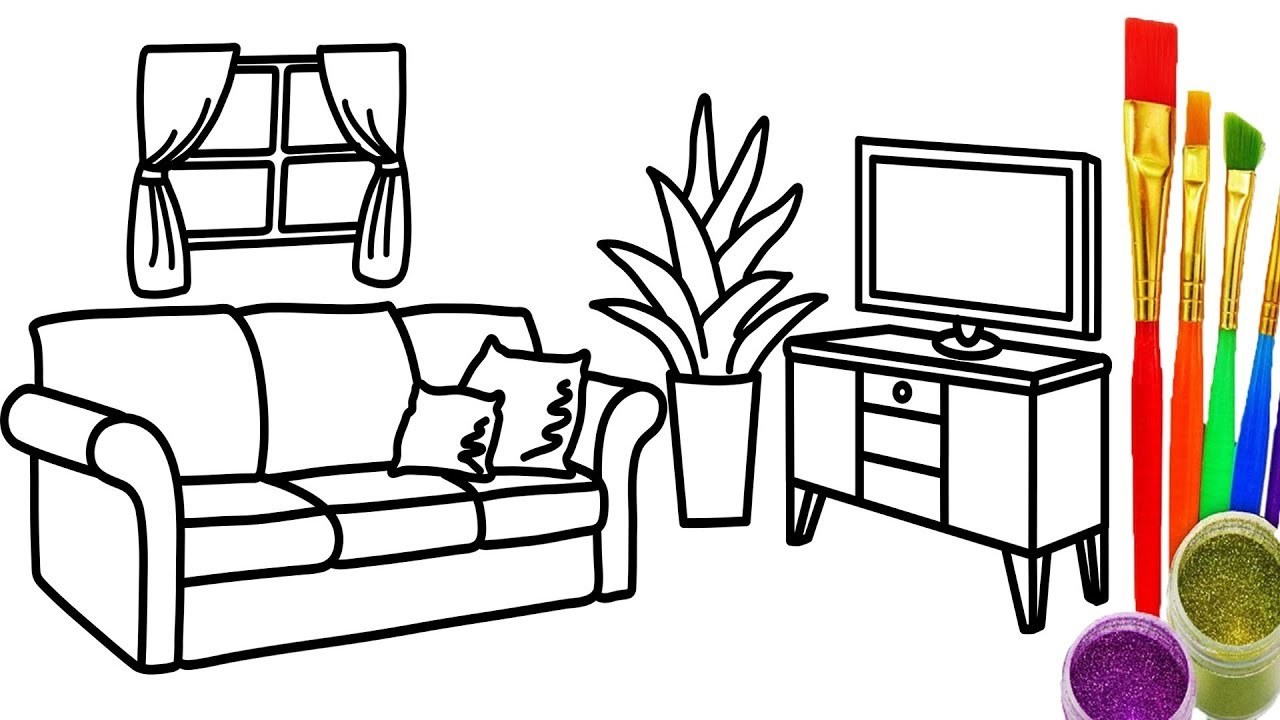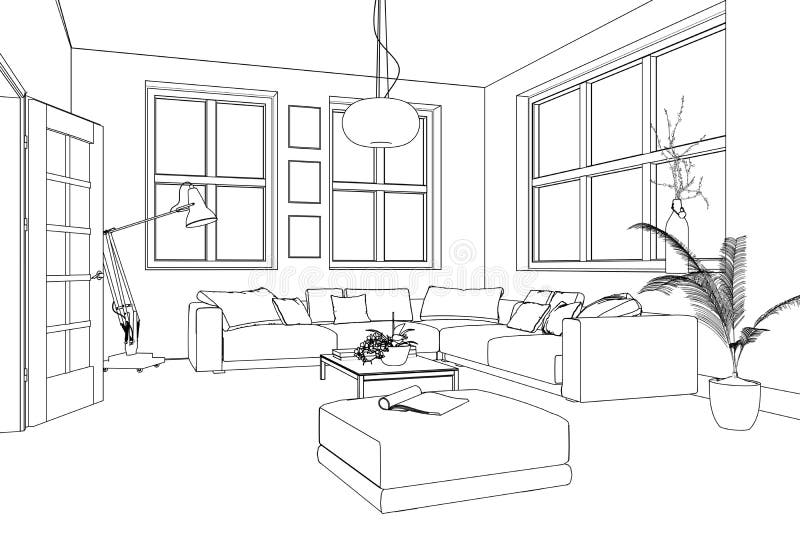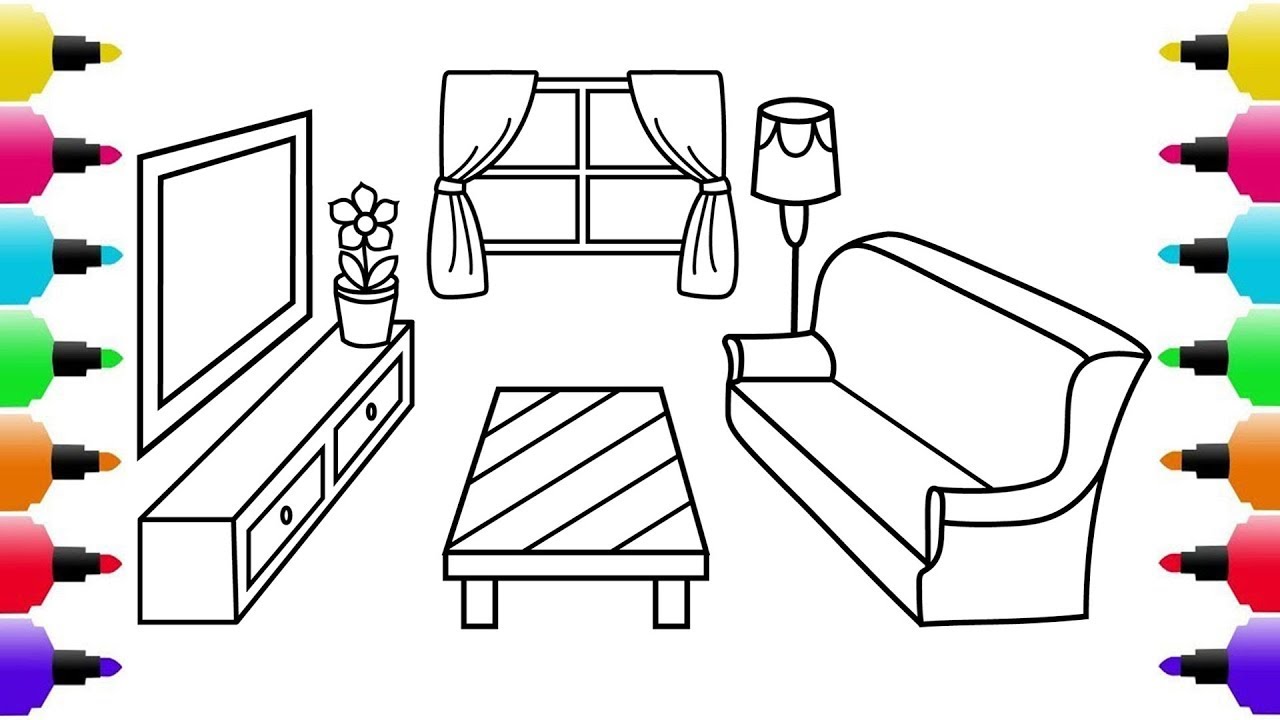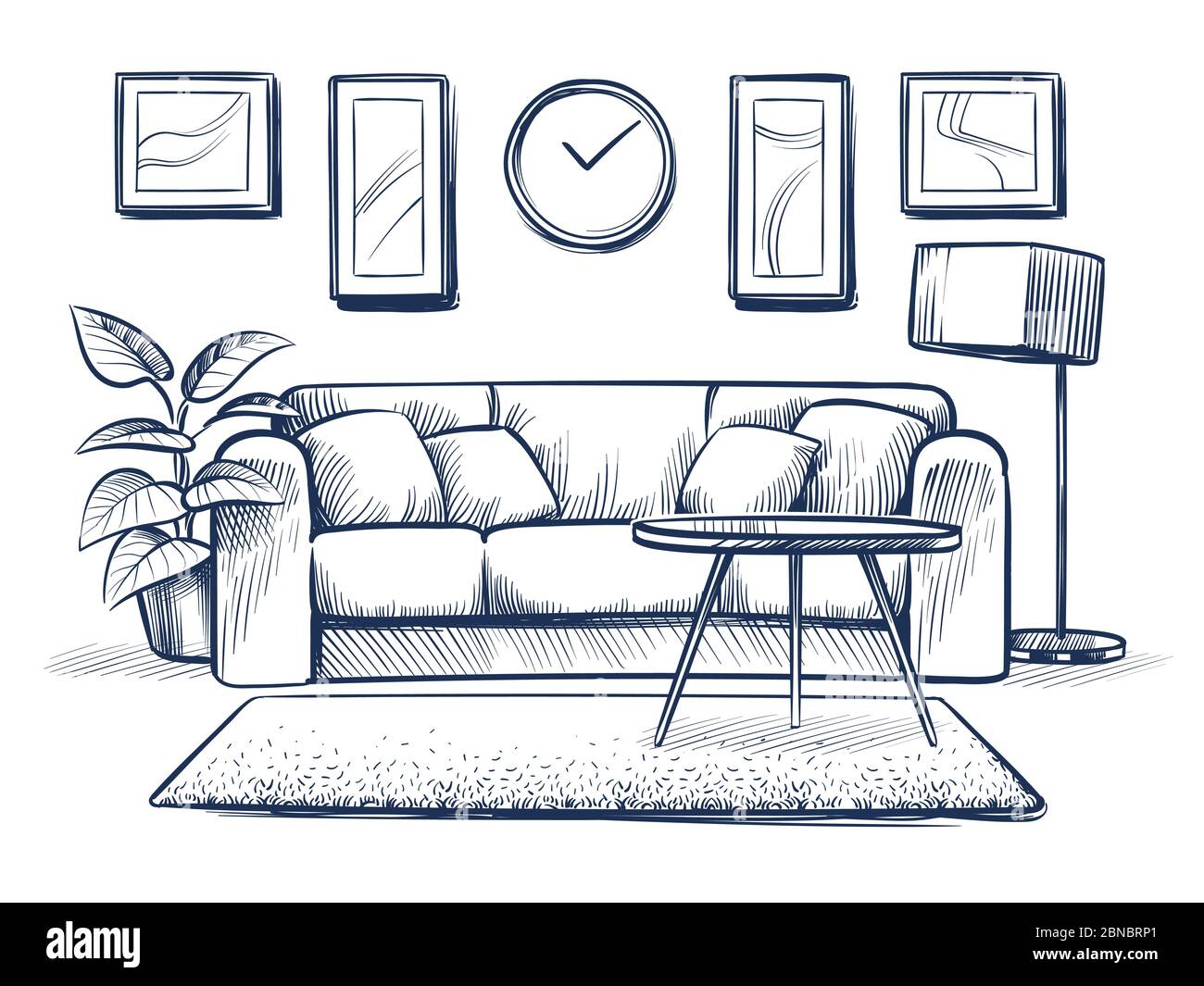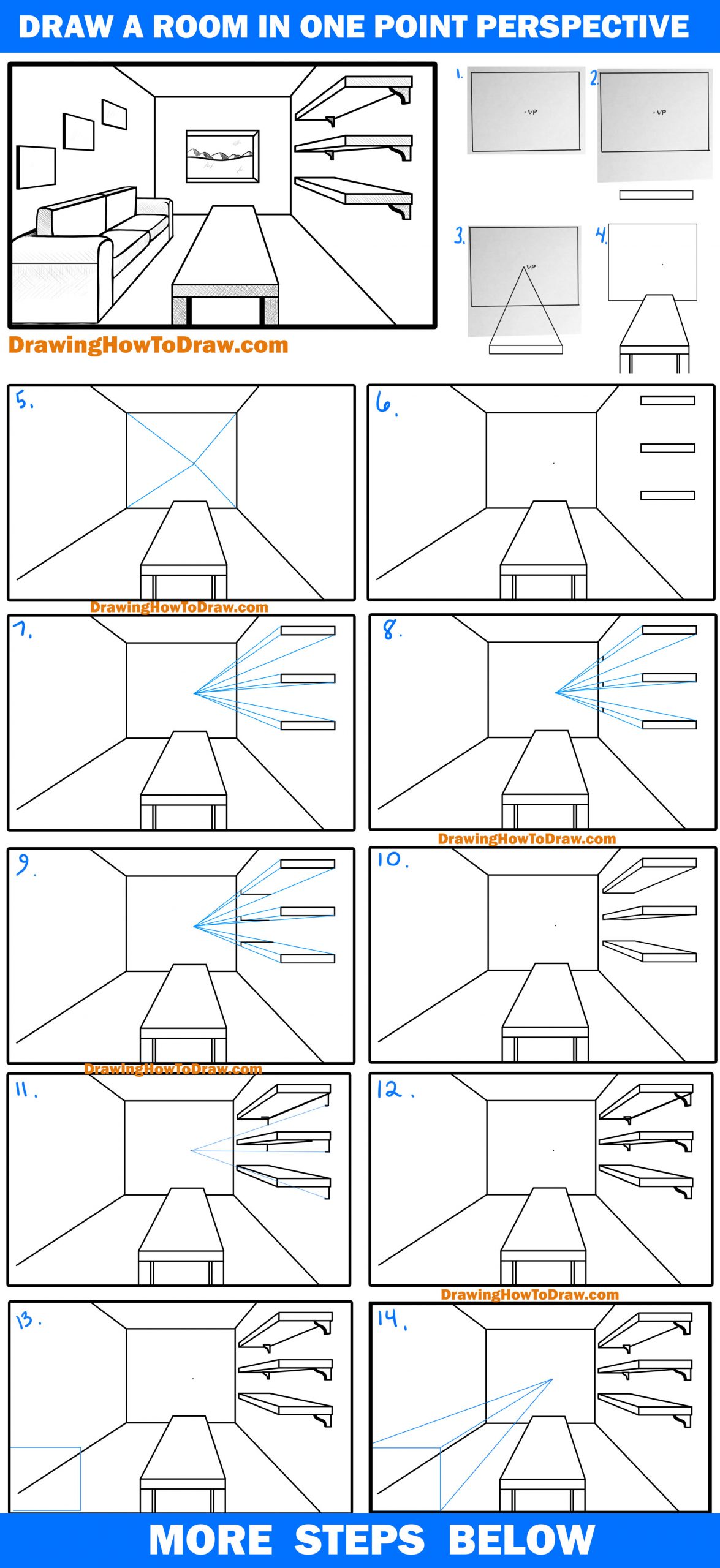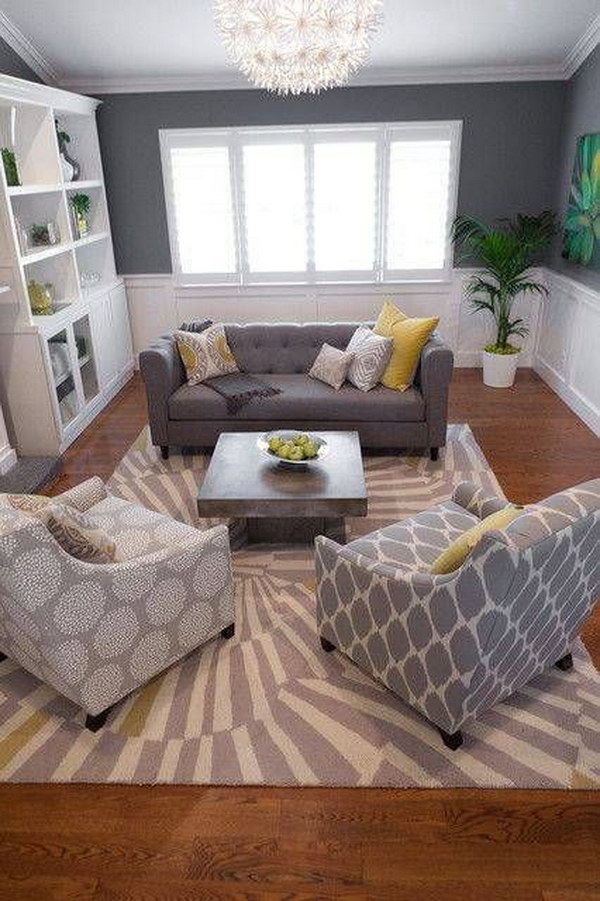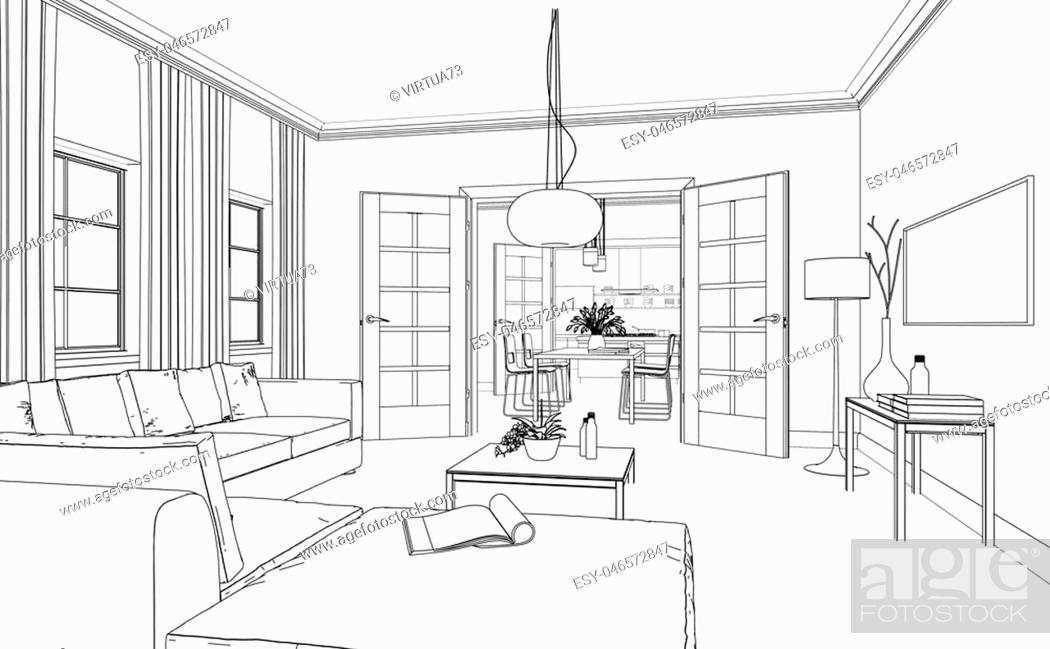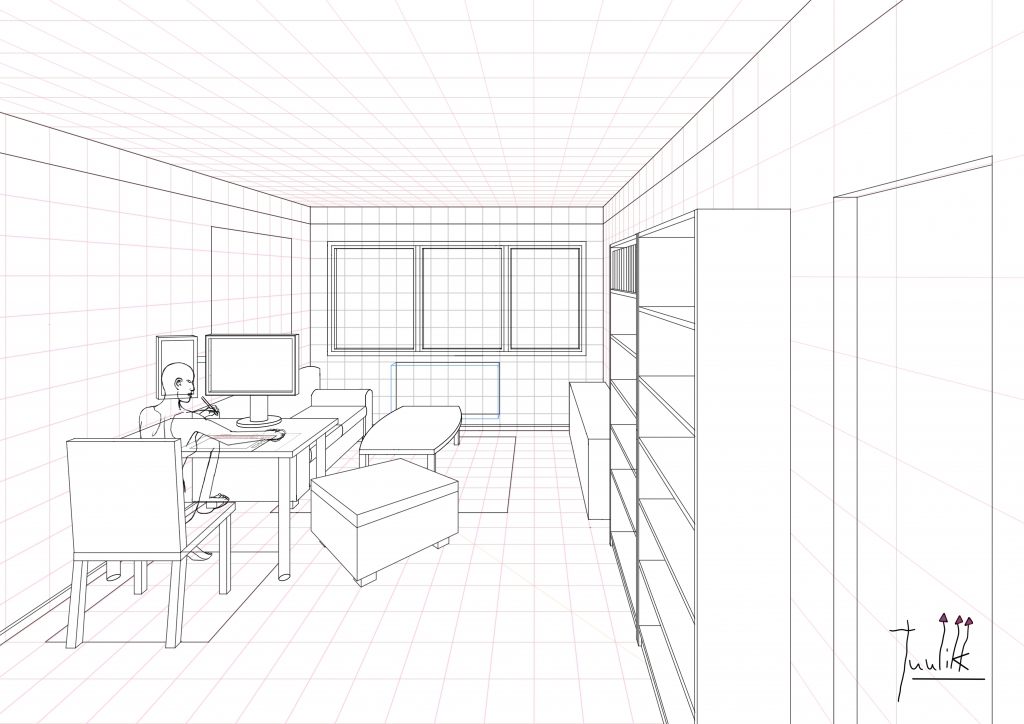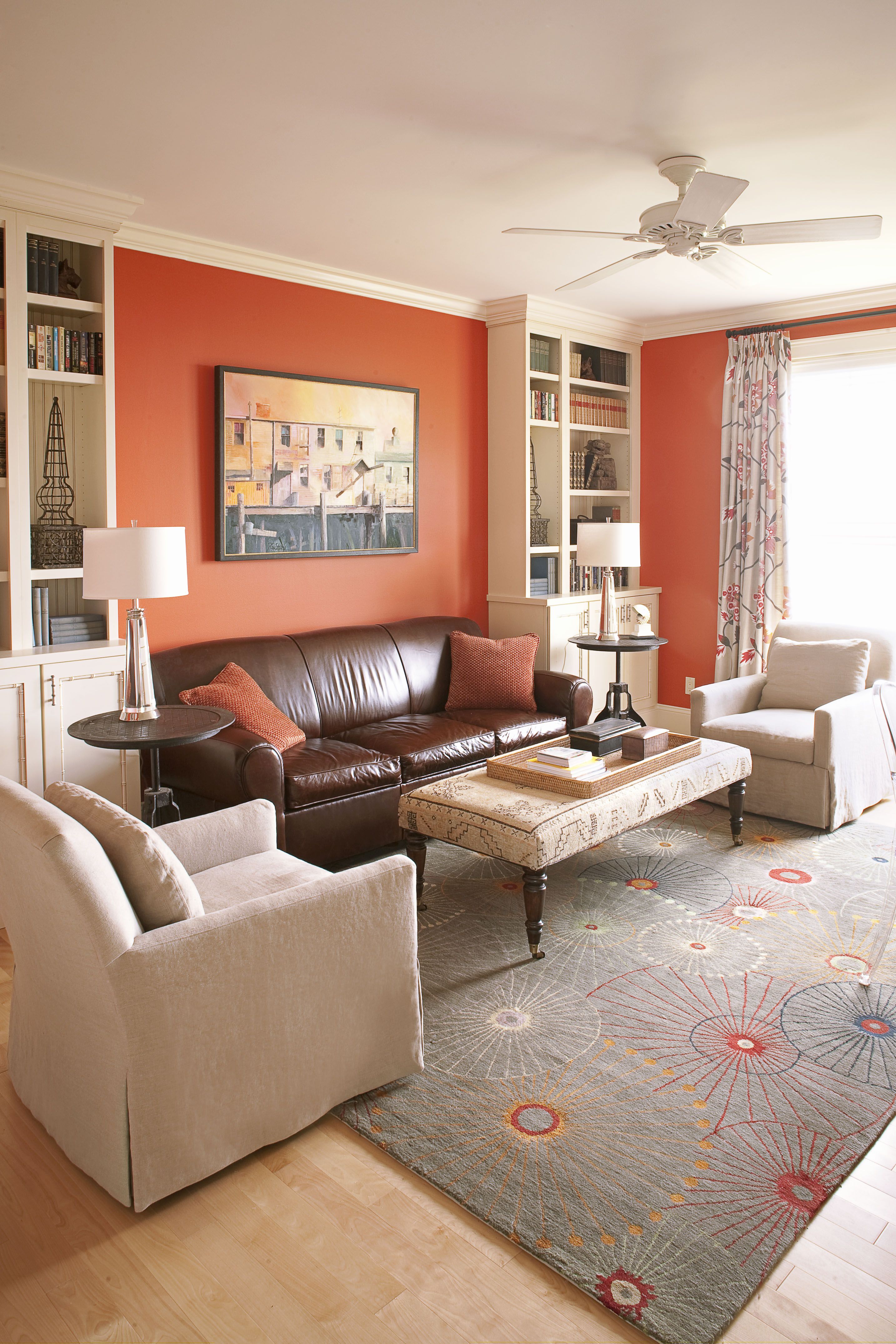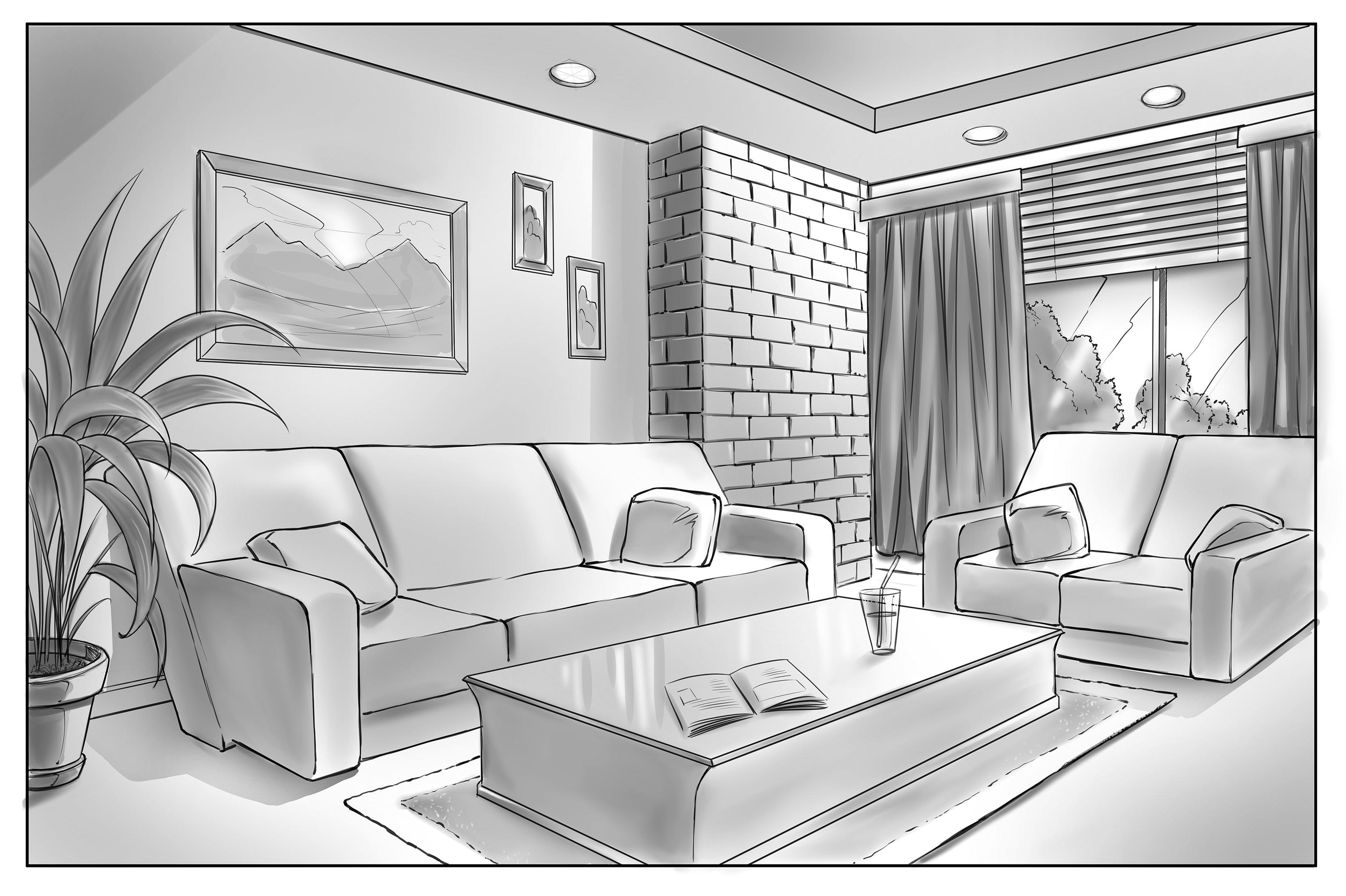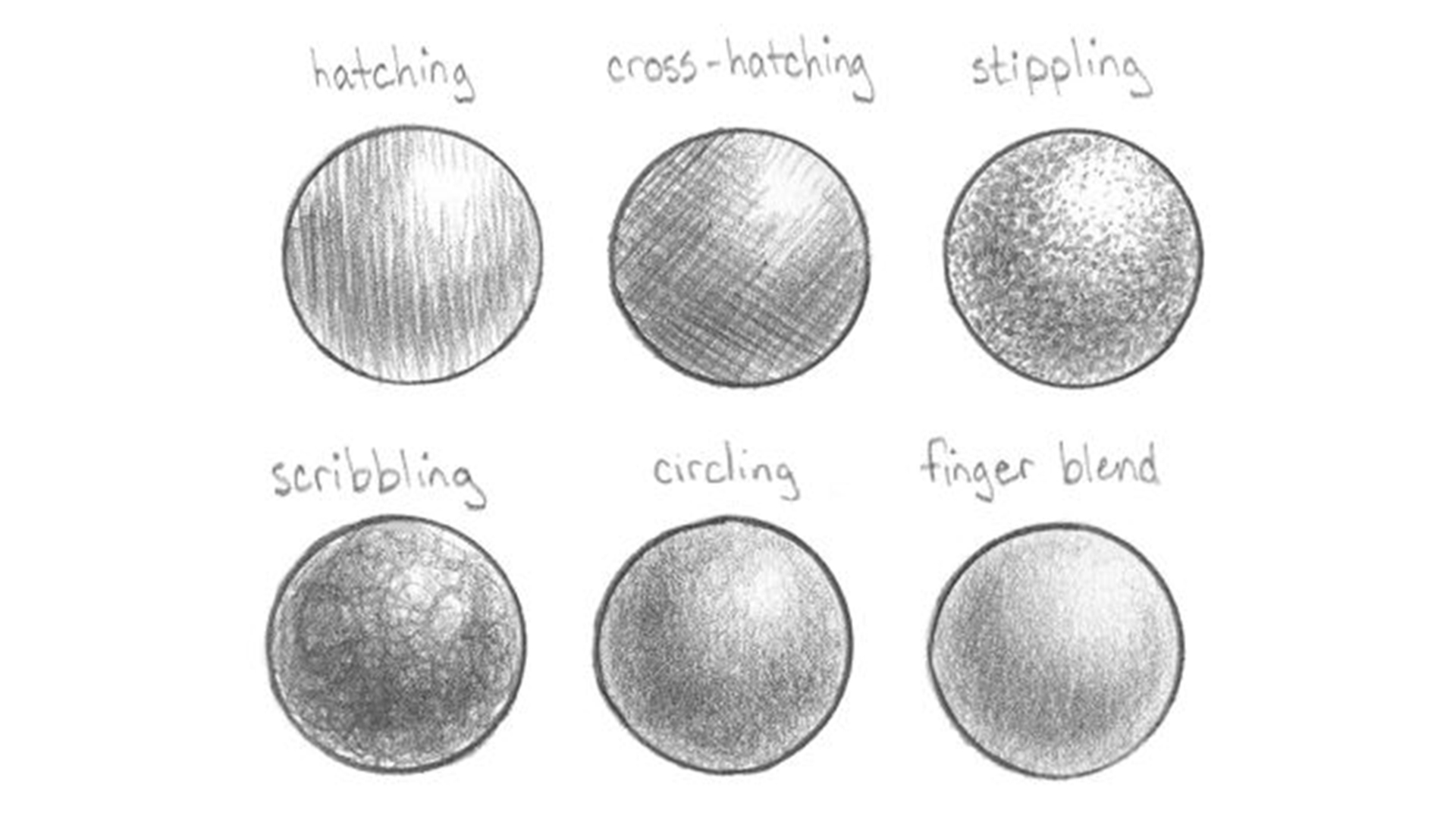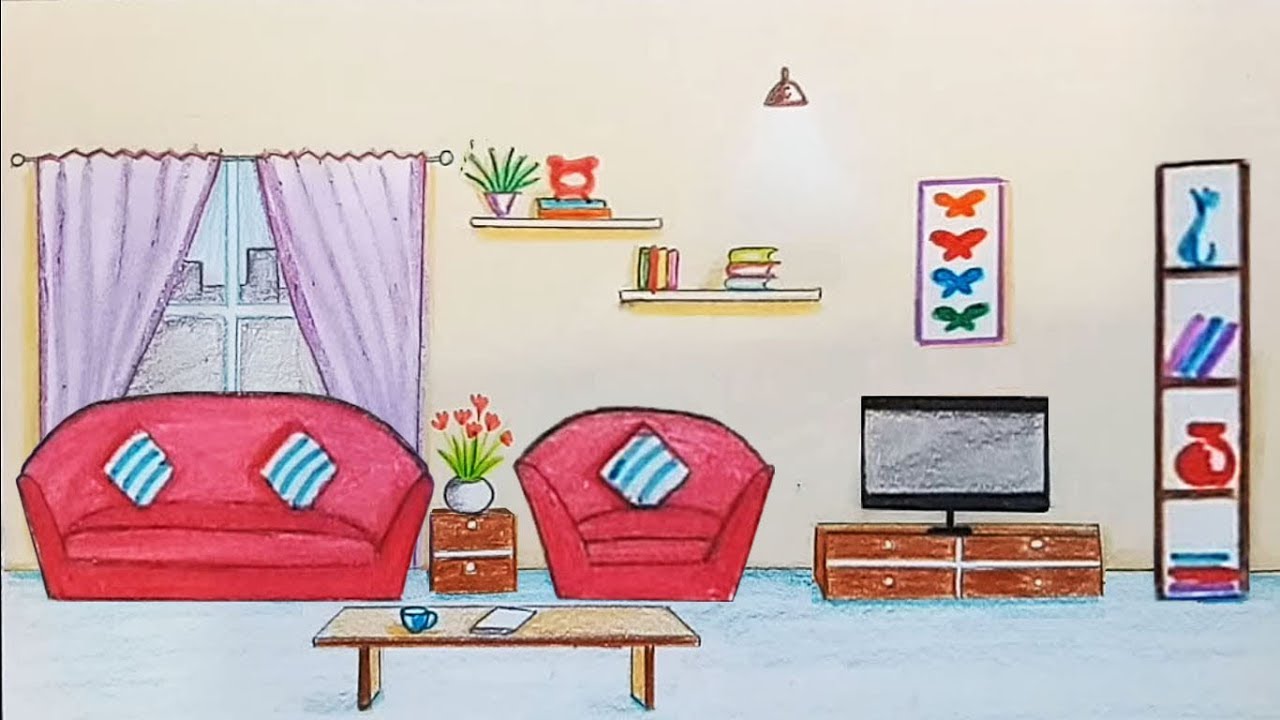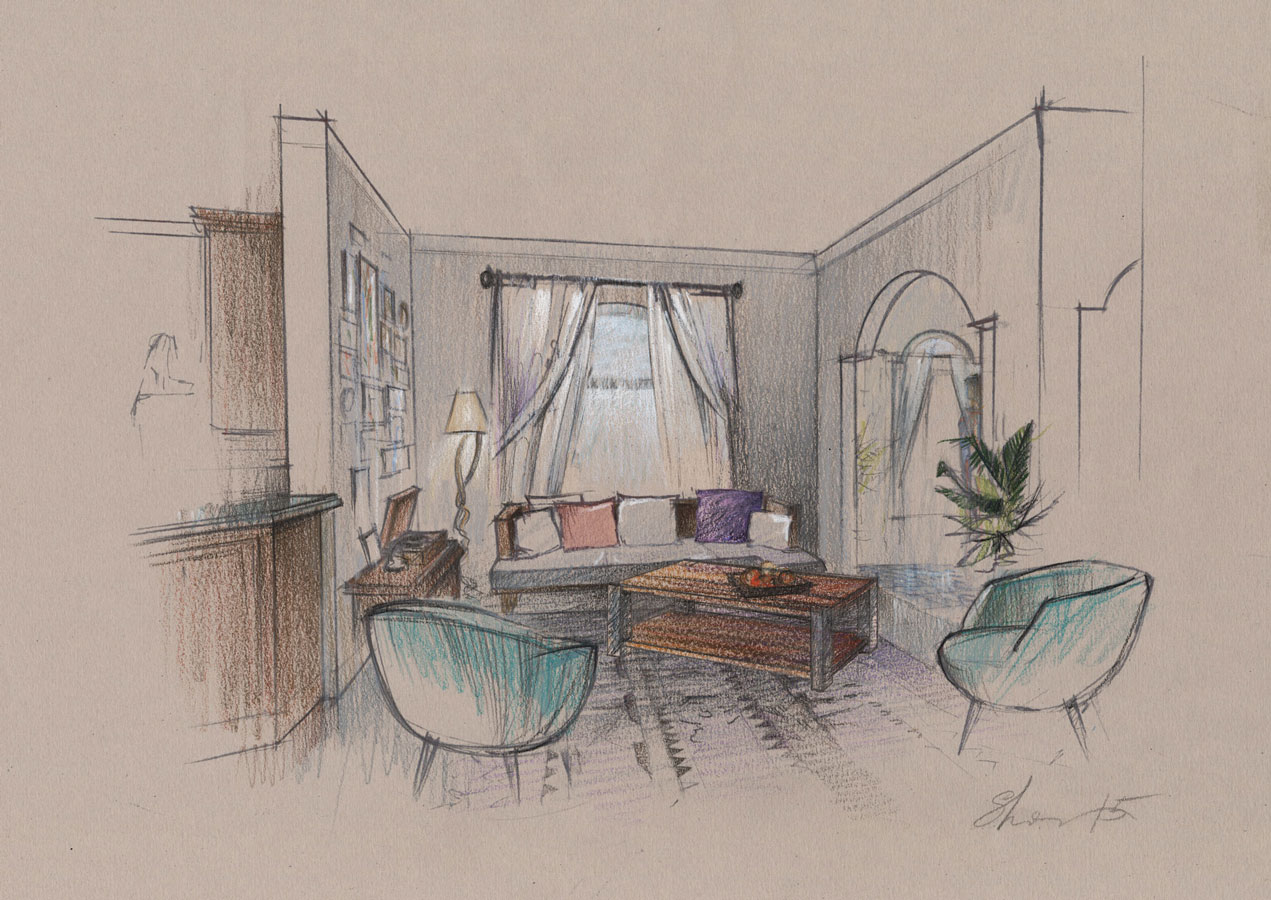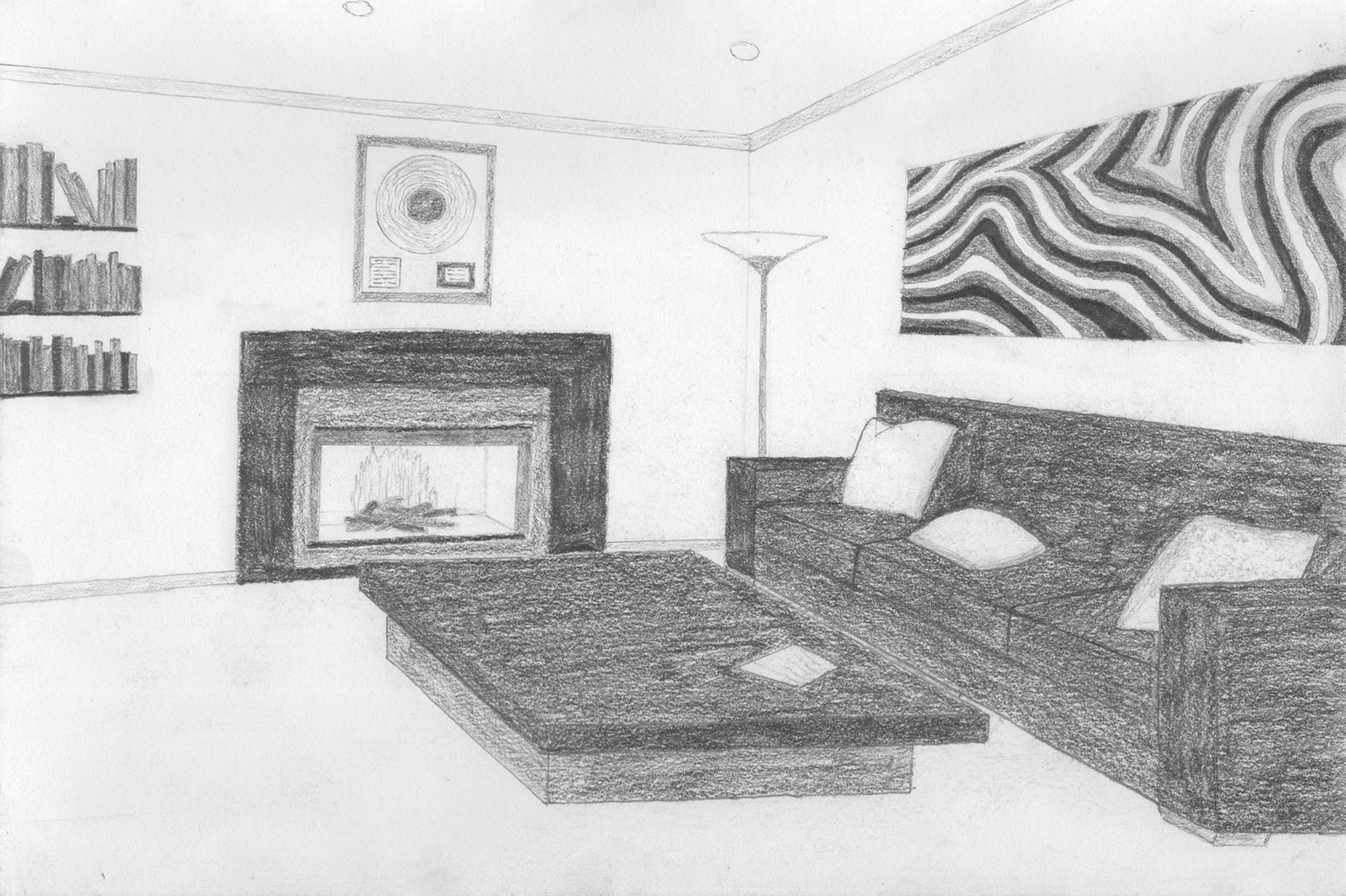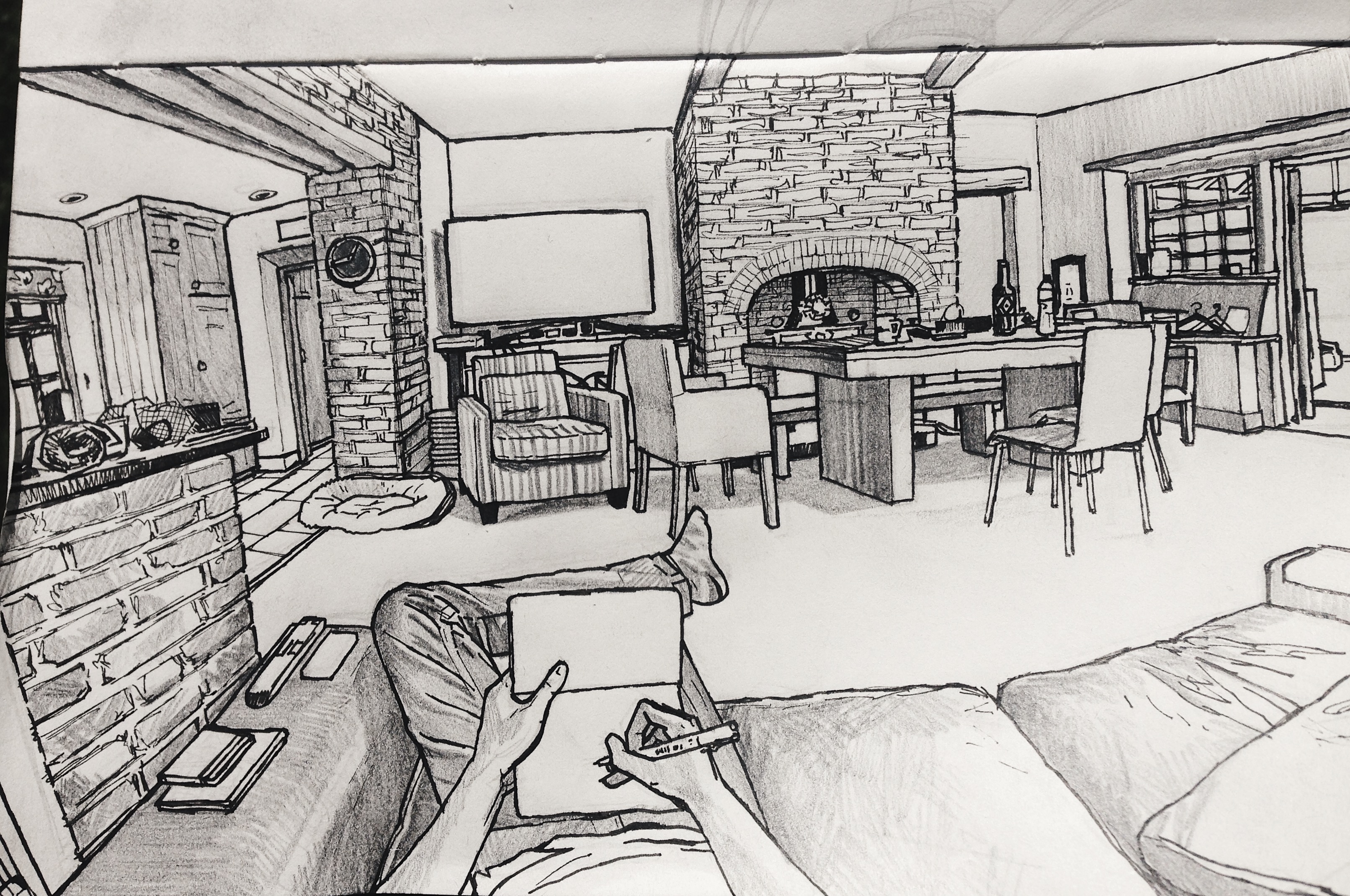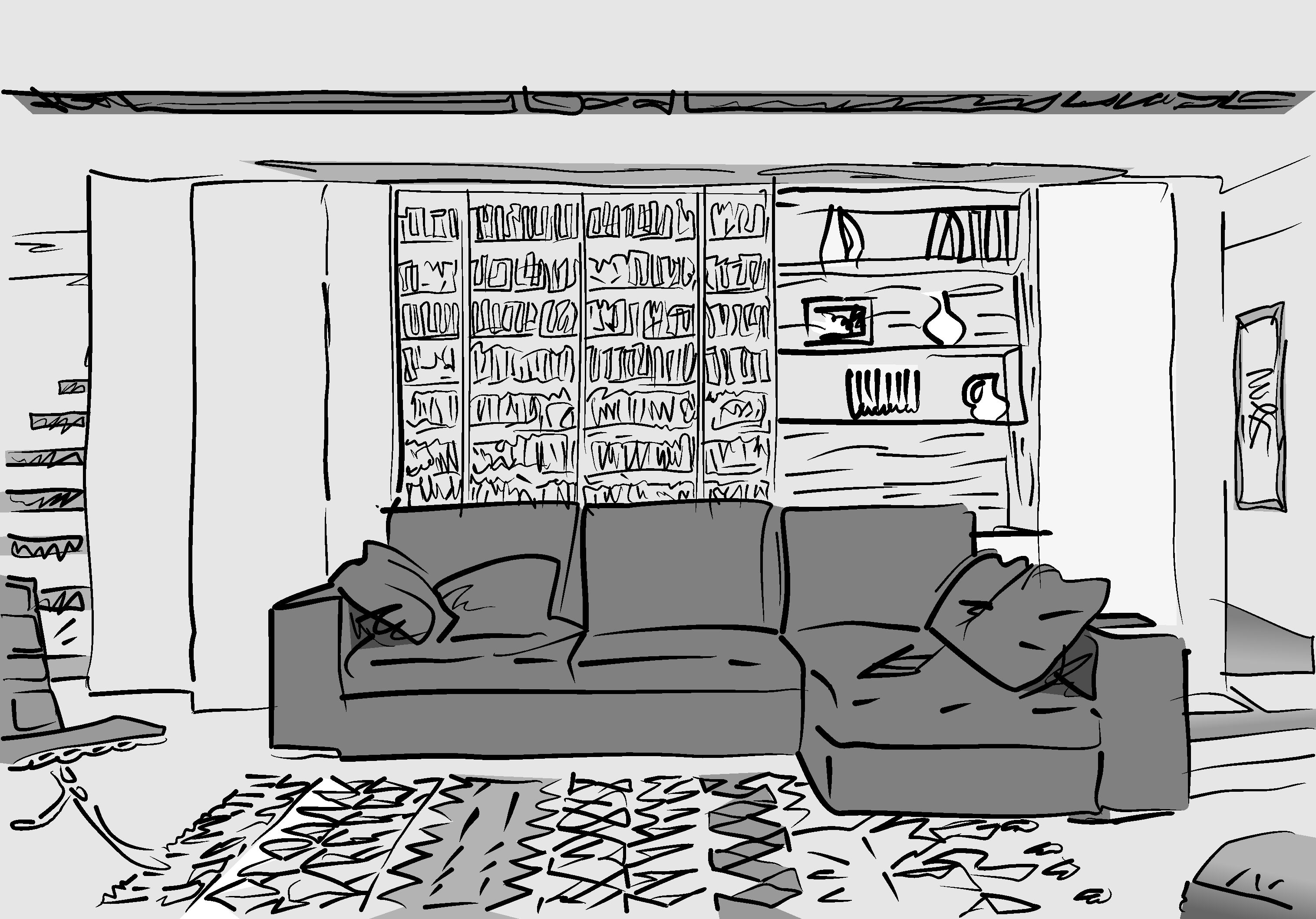Are you looking to add a personal touch to your living room? Drawing it may be just the way to do it. Not only can it be a fun and creative activity, but it can also give you a better understanding of the space and how you can improve it. Here are some tips and tricks to help you draw your living room like a pro.Drawing your living room: Tips and tricks
Step 1: Start with a sketch The first step to drawing your living room is to sketch out the basic shape and layout. This will help you get a sense of the proportions and placement of furniture and decor in your space. Step 2: Add in furniture and decor Using your sketch as a guide, start adding in the furniture and decor pieces in your living room. Remember to pay attention to details such as size, shape, and placement. Step 3: Use reference photos If you're struggling with getting the details just right, it can be helpful to use reference photos of your living room. This will allow you to accurately capture the colors, textures, and patterns in your space. Step 4: Focus on lighting and shadows Lighting and shadows play a crucial role in creating a realistic drawing. Pay attention to where the light is coming from and how it affects the objects in your living room. Step 5: Add finishing touches Once you have the basic elements of your living room drawn, you can add in smaller details such as wall hangings, plants, and other decor to bring the space to life.How to draw your living room in 5 easy steps
If you're new to drawing, it can feel overwhelming to tackle your living room. Here are some ideas to help you get started: Use basic shapes: Start with simple shapes like squares, circles, and rectangles to create the basic layout of your living room. Experiment with different perspectives: Don't be afraid to try drawing your living room from different angles to add depth and dimension to your artwork. Focus on one area at a time: Instead of trying to draw the entire living room at once, break it down into smaller sections and focus on one at a time. Draw in black and white: If you're not confident with using colors, try drawing your living room in black and white first. This will help you focus on the details and shading without the added pressure of getting the colors right.Living room drawing ideas for beginners
Sketching is a great way to get started with drawing your living room. It allows you to play with different ideas and make changes before committing to a final drawing. Here are some tips for sketching your living room: Start with a light pencil: Use a light pencil to create your initial sketch so that it's easy to make changes and adjustments as you go. Use basic shapes: As mentioned earlier, using basic shapes can help you create the basic layout of your living room before adding in details. Don't worry about perfection: Sketching is all about experimentation, so don't worry about making mistakes. Embrace imperfections and use them to your advantage. Add in details later: Your sketch doesn't have to be perfect. You can add in details and refine your drawing in later stages.Sketching your living room: A beginner's guide
If you're struggling to come up with ideas for your living room drawing, look to your existing decor for inspiration. Take a close look at the colors, patterns, and textures in your room and try to incorporate them into your drawing. You can also use pieces of decor as reference points for size and placement.Drawing inspiration from your living room decor
One of the main goals of drawing your living room is to create a realistic representation of the space. Here are some tips to help you achieve a realistic drawing: Pay attention to scale: Make sure the size of your furniture and decor is accurate in relation to each other and the overall space. Use shading techniques: Shading adds depth and dimension to your drawing, making it look more realistic. Experiment with different shading techniques to find what works best for your drawing. Include small details: It's the small details that make a drawing look realistic. Don't forget to add in things like texture, patterns, and small decor pieces to bring your living room to life.Creating a realistic living room drawing
As mentioned earlier, experimenting with different perspectives can add interest and depth to your living room drawing. Here are some ideas for different perspectives to try: Bird's eye view: Draw your living room as if you were looking down at it from above. Worm's eye view: Draw your living room as if you were looking up at it from the ground. Corner view: Draw your living room from the perspective of a corner of the room. Side view: Draw your living room from the side, focusing on the length of the room.Drawing your living room in different perspectives
As mentioned earlier, shading is an essential technique for creating a realistic drawing. Here are some tips for using shading in your living room drawing: Use a range of values: Shading is all about creating a range of light and dark values to show depth and dimension. Practice using different levels of pressure with your pencil to achieve different shades. Pay attention to light sources: Think about where the light is coming from in your living room and use shading to show how objects are affected by it. Blend for a smoother look: To achieve a smooth and realistic look, use a blending tool or your finger to blend your shading together.Using shading techniques to enhance your living room drawing
Colored pencils can add a whole new dimension to your living room drawing. Here are some tips for using them: Start with a light layer: Begin by lightly coloring in the main elements of your living room with a light layer of color. This will allow you to build up colors and layers for a more realistic look. Layer colors for depth: Use multiple layers of different colors to create depth and dimension in your drawing. Use a blending tool: To blend colors together, use a blending tool or your finger to create a smooth transition between colors.Drawing your living room with colored pencils
The final step in drawing your living room is to add in all the little details that make it unique. Here are some ideas for adding details: Wall hangings: Draw any wall hangings or artwork you have in your living room with attention to detail such as colors and patterns. Plants: If you have plants in your living room, draw them using different shades of green and add in details such as leaves and stems. Textures: Use different shading techniques to add texture to your drawing, such as the texture of a rug or the grain of wood on furniture. In conclusion, drawing your living room can be a fun and creative way to add a personal touch to your space. By following these tips and tricks, you can create a realistic and detailed drawing that showcases your unique style and perspective. So grab your pencils and get ready to bring your living room to life on paper!Adding details to your living room drawing
Creating a Welcoming and Functional Living Room Design
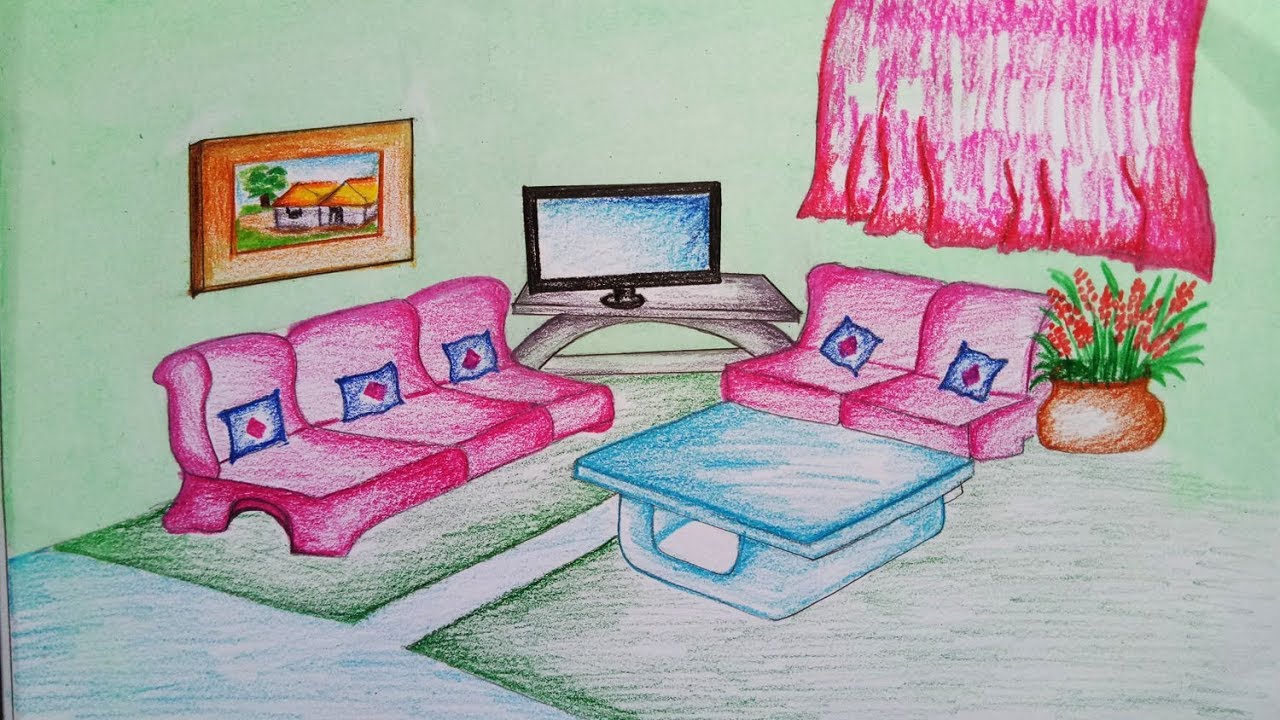
Transforming Your Living Room into a Space You Love
 When it comes to designing your living room, it's important to create a space that is not only visually appealing but also functional and inviting. Your living room is often the central gathering space in your home, so it's essential to create a design that reflects your personal style and meets the needs of your lifestyle. Whether you're starting from scratch or looking to revamp your existing living room, here are some tips to help you draw and design a beautiful and functional space that you'll love spending time in.
Start with a Theme
Before you begin drawing your living room, it's helpful to have a clear theme in mind. This will guide your design choices and ensure that your space has a cohesive and unified look. Your theme can be anything from modern and minimalist to cozy and traditional. Consider your personal preferences and the overall aesthetic of your home to determine the best theme for your living room.
Create a Layout
Once you have a theme in mind, it's time to create a layout for your living room. This will involve measuring your space and determining the best placement for furniture and other elements. Consider the flow of your room and how you want people to move through it. Make sure to leave enough space for comfortable seating and any traffic areas.
Utilize keywords such as "living room layout" and "furniture placement" to optimize your design for search engines.
Choose Colors and Fabrics
One of the most important aspects of any living room design is color and fabric choices. These elements can significantly impact the overall look and feel of your space. When selecting colors, consider using a neutral base and incorporating pops of color through accent pieces such as pillows, rugs, and artwork. This will allow you to change up your design easily without having to invest in new furniture.
Keywords like "color scheme" and "fabric choices" can help enhance your design's search engine optimization.
Add Personal Touches
To make your living room truly feel like home, don't forget to add personal touches. This can include family photos, sentimental decor, and items that reflect your interests and hobbies. These elements will add character and warmth to your space, making it feel more inviting and personal.
Keep Functionality in Mind
While aesthetics are essential, it's also crucial to consider the functionality of your living room design. Make sure to include enough seating for your family and any guests, as well as storage solutions for clutter.
Keywords like "functional design" and "storage solutions" can help optimize your article for search engines.
In conclusion, designing your living room is a fun and exciting process that allows you to create a space that reflects your personality and meets your needs. By following these tips and incorporating your personal style, you can create a welcoming and functional living room that you'll love spending time in. So go ahead, grab your sketchbook and start drawing your dream living room today!
When it comes to designing your living room, it's important to create a space that is not only visually appealing but also functional and inviting. Your living room is often the central gathering space in your home, so it's essential to create a design that reflects your personal style and meets the needs of your lifestyle. Whether you're starting from scratch or looking to revamp your existing living room, here are some tips to help you draw and design a beautiful and functional space that you'll love spending time in.
Start with a Theme
Before you begin drawing your living room, it's helpful to have a clear theme in mind. This will guide your design choices and ensure that your space has a cohesive and unified look. Your theme can be anything from modern and minimalist to cozy and traditional. Consider your personal preferences and the overall aesthetic of your home to determine the best theme for your living room.
Create a Layout
Once you have a theme in mind, it's time to create a layout for your living room. This will involve measuring your space and determining the best placement for furniture and other elements. Consider the flow of your room and how you want people to move through it. Make sure to leave enough space for comfortable seating and any traffic areas.
Utilize keywords such as "living room layout" and "furniture placement" to optimize your design for search engines.
Choose Colors and Fabrics
One of the most important aspects of any living room design is color and fabric choices. These elements can significantly impact the overall look and feel of your space. When selecting colors, consider using a neutral base and incorporating pops of color through accent pieces such as pillows, rugs, and artwork. This will allow you to change up your design easily without having to invest in new furniture.
Keywords like "color scheme" and "fabric choices" can help enhance your design's search engine optimization.
Add Personal Touches
To make your living room truly feel like home, don't forget to add personal touches. This can include family photos, sentimental decor, and items that reflect your interests and hobbies. These elements will add character and warmth to your space, making it feel more inviting and personal.
Keep Functionality in Mind
While aesthetics are essential, it's also crucial to consider the functionality of your living room design. Make sure to include enough seating for your family and any guests, as well as storage solutions for clutter.
Keywords like "functional design" and "storage solutions" can help optimize your article for search engines.
In conclusion, designing your living room is a fun and exciting process that allows you to create a space that reflects your personality and meets your needs. By following these tips and incorporating your personal style, you can create a welcoming and functional living room that you'll love spending time in. So go ahead, grab your sketchbook and start drawing your dream living room today!






